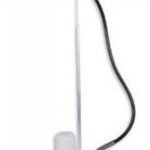Thanks to fashionistas like Sarah Jessica Parker, vintage clothing has shot up in popularity since the late nineties. The perfect way to get a one of a kind outfit without paying haute couture prices, vintage is every stylish gal’s secret fashion weapon. However, if you aren’t careful, it’s easy to cross the line from “vintage” to “garbage”. Here are four tips from a retro fashion addict to help you when you’re digging for second hand steals.
Icky or Sticky? No Thank You!
At first glance, that June Cleaver meets Gwen Stefani style 1940’s frock may be a real stunner, but make sure you do a double take. People don’t always try on used or vintage items before purchasing, which means they don’t always give a close inspection. All vintage stores wash their items before putting them on the racks, so if an odor or discoloration is present, that means it is there for good. Any item with an odor should not be purchased, and you should notify the sales clerk immediately – if an odd scent has made it through the wash, it is most likely a potentially toxic chemical or waste material. As for a stain, the problem could very well be something as innocent as wine. Inspect the item carefully, and if you choose to purchase, make sure that you’re already getting the piece at a bargain; you will most likely have to invest more in a dye or a decorative cover-up.
But What Would I Pay at Macy’s?
Many hipsters flock to vintage and consignment shops to score great deals on great garments. However, many upscale stores in large cities are hiking up prices on items that may or may not be worth their price. At a trendy vintage shop, make sure that you’re getting your money’s worth. Unless the garment is a vintage designer piece, such as a 1980’s Jean Paul Gautier, do not pay what you would pay for a similar garment that’s brand new. Remember that the point is to find a deal or a steal. Should you find a piece that may be overpriced, remember: you can always haggle.
Knock Ten Bucks Off and We Have a Deal
If you tried to haggle with the sales assistant at Old Navy, you’d probably get laughed at and asked to leave. However, very few vintage stores are part of a corporation or chain. Most are mom and pop storefront enterprises with no standard by which they price their items. Furthermore, vintage shop owners can go through countless rummage sales and hundreds of garments a week. As a result, they will sometimes overprice an item illogically. If you find a piece that you love but think may be priced too expensively, ask an employee about it. If it’s a manager or owner, they very well may be willing to come down on the price tag. However, don’t try to fight them if they are reluctant – many vintage store owners are experts in the field who know the worth of different types of used garments.
You Say Potato, I Say Upscale Boutique
Somewhere along the way, used garment shops got divided into two categories – sleek boutiques and dumpy second hand stores. Shoppers who consider themselves more Vogue magazine than “Attention K-Mart Shoppers” have embraced funky vintage stores and shunned retailers like Goodwill. But I’m going to let you in on a little secret: almost all vintage clothing sellers purchase items for their shops at places like Goodwill or The Salvation Army, and then re-sell them for upwards of five times what they paid. No matter what funky décor a shop houses, vintage stores are not all that different from second hand non-profit chains. Remember: a find is a find, no matter where you got it from. Because really, when you’re rocking a ’60s sequin dress at a cool cocktail lounge, do you honestly think anyone will care it came from a store with fluorescent lighting and grimy floors? Didn’t think so.





